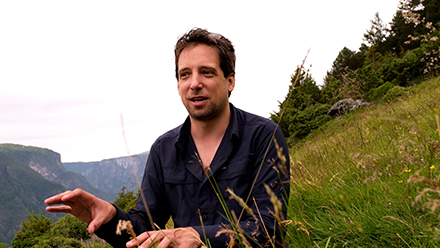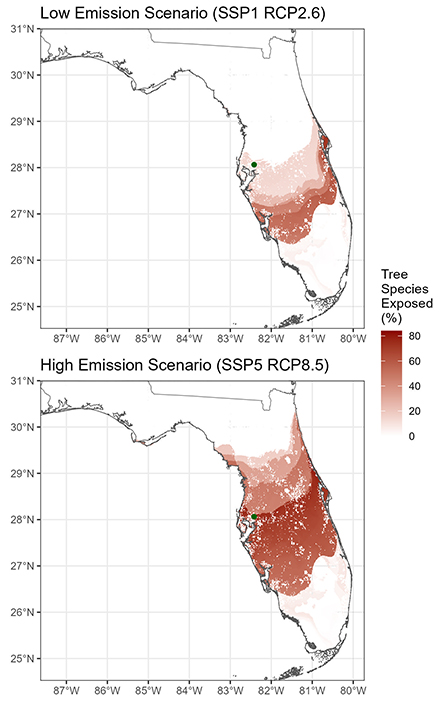By Kellie Britch, College of Arts and Sciences

Maitner’s latest paper was recently published in the Proceedings of the National Academy of Sciences of the United States of America (PNAS).
Brian Maitner, an assistant professor in the Department of Integrative Biology, is revolutionizing the way researchers examine and predict the impact of environmental
shifts on plant diversity. His work will ultimately give decision-makers the necessary
information to preserve one of the world’s most valuable resources: trees.
“Trees are perhaps some of the most important organisms on the planet,” said Maitner.
“They really drive things like climate carbon sequestration and the local climate
structure for animals. For humans, they provide endless physical and cultural value.
“Trees provide oxygen and food, stabilize the soil, protecting areas against flooding,
give us building materials and significantly impact mental health.”
Long-term changes to global temperatures and an increase in land development force
living things, such as trees, to adapt, migrate or face extinction. By studying a
tree’s characteristics and history, researchers like Maitner hope to learn how to
save them.
Maitner is working with a team of interdisciplinary collaborators from around the
world to map the ranges of tree species globally and predict their long-term health.
By using a technique called exposure modeling, the team is able to map the historical
conditions experienced by various species of trees.

Maitner and his collaborators use maps like this to gauge the potential number of tree species that could be impacted by environmental changes in a given area. (Image courtesy of Brian Maitner)
Unlike other exposure models that focus on isolated things like temperature or rain fall, Maitner’s model uses the Köppen-Geiger climate classification system to track more significant environmental changes.
“Köppen-Geiger climate zones are basically ways of splitting the environment into
major climate areas,” explained Maitner. “For example, is it a temperate region or
a tropical region? Is it a desert? Is it tundra? These high-level categories correspond
with boundaries for different types of ecosystems and the extent of where different
plants can live.”
Being exposed to a new climate zone signifies a potentially major shift that could
threaten the survival of a tree species.
“When you see that something like 80 percent of tree species in some areas are going
to be exposed to a whole new climate zone by the end of the century, that's actually
quite alarming,” said Maitner. “That means, for example, all these species that thrive
in temperate regions are going to be moving into a tropical climate, and we have no
evidence that they can actually survive in those conditions.”
Maitner’s models allow researchers to differentiate between regions that are relatively
stable and areas where most species will be exposed to a new climate.
“That allows us to target regions where we might need to think about how we can manage
things differently,” said Maitner. “For areas that aren't changing, we might consider
making it an area we want to protect because it could serve as a refuge. This gives
us the chance to open up different management scenarios, and it allows decision makers
to potentially make more informed choices.”
This data also presents interesting opportunities for biologists, specifically graduate
students, to visit the areas with increased exposure and perform experiments on the
species that could be exposed to new, potentially threatening, conditions.
Learn more about Maitner’s research.
